The approach behind the Employee Provident Fund (EPF) scheme is to provide significant benefit to the employees at the time of their retirement. The scheme specifies that a nominal amount is deducted from the salary of an employee as a contribution towards the fund. According to the latest circular, which has got affected from June 1, 2015, changes have been made regarding the Income-tax rules on the EPF withdrawal by one of the biggest retirement funding associations worldwide, Employee Provident Fund Organization (EPFO).
(Update: Budget-2016)
Payment of an accumulated balance to pay an employee from PF, the threshold limit increased from Rs. 30,000 to limit Rs. 50,000. So, TDS is not applicable if PF withdrawal amount is less than Rs 50,000.
PF Withdrawal Rules associated with TDS
Cases where TDS is not applicable
- If the amount, which is to be withdrawn as PF is less than
Rs. 30000Rs. 50,000. - No tax on pf Withdrawal after 5 years or more of continuous service.
- If an employee withdraws an amount of more than or equal to
Rs. 30000Rs. 50,000 before 5 years but submits Form 15G /15H along with his / her PAN. - When a transfer of PF is from one A/c to another A/c.
- Being an EPF member, if the service has been terminated due to ill-health and he withdraws his accumulation (balance).
- If the employer discontinues the business or any cause beyond the control of EPF Scheme’s member (Employee).
Cases where TDS is applicable
When accumulation is more than Rs. 30000 Rs. 50,000 and the employee i.e. the EPF member has worked less than 5 years, then two cases are there:
- Deduction of TDS will be at 10% if PAN is submitted, but 15G/15H Forms are not.
- Deduction of TDS will be at maximum marginal rate i.e., 34.608% if PAN is not submitted.
Flowchart: TDS on EPF Withdrawal
Some other important key points:
- If the subscriber has submitted all the required forms, then he/she will get an exemption from TDS with no taxable income.
- TDS will be deducted under Section 192A of Income Tax Act, 1961 and it is deductible at the time of payment.
- Form 15G and 15H are self-declarations and may be accepted in duplicate.
- If the amount of withdrawal is beyond 2,50,000 or 3,00,000 respectively, then Forms 15G and 15H cannot be accepted.


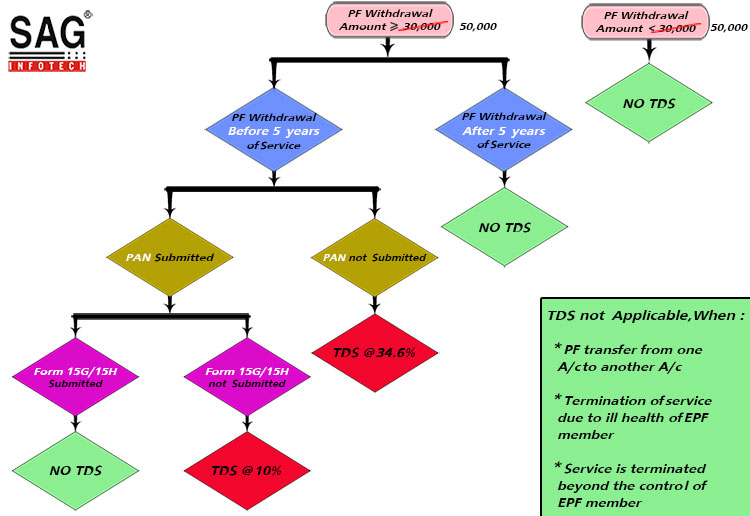

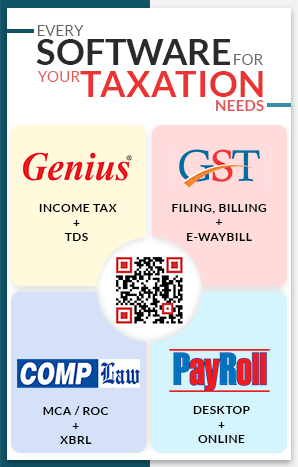
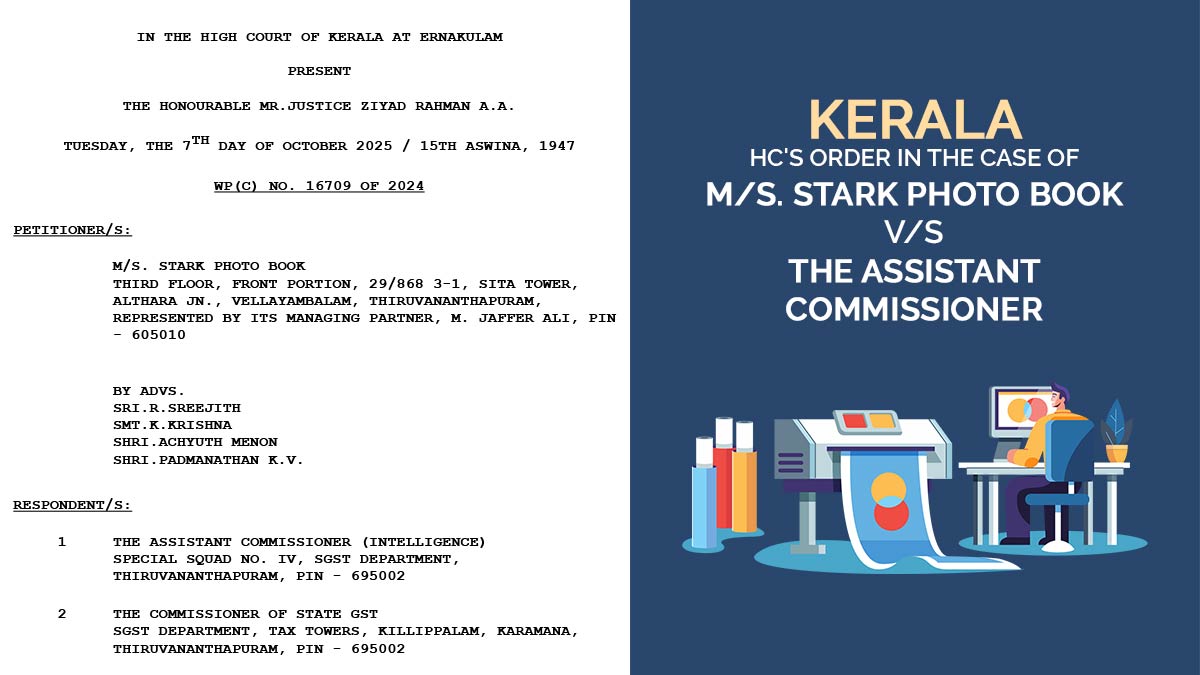
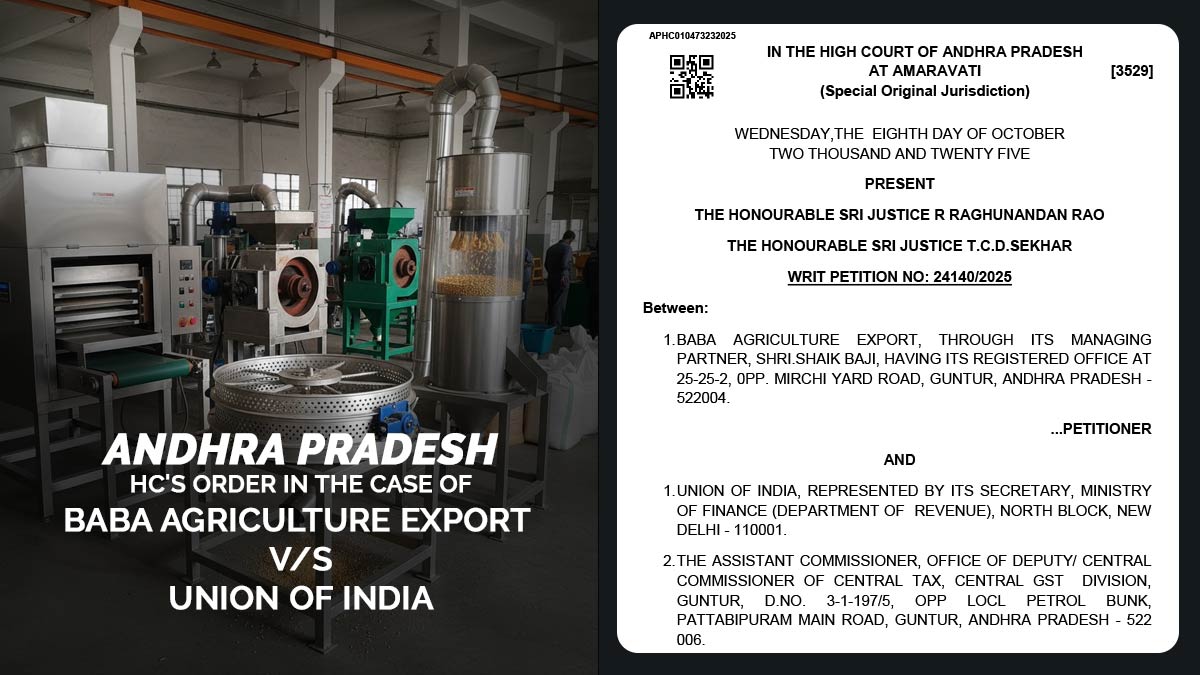

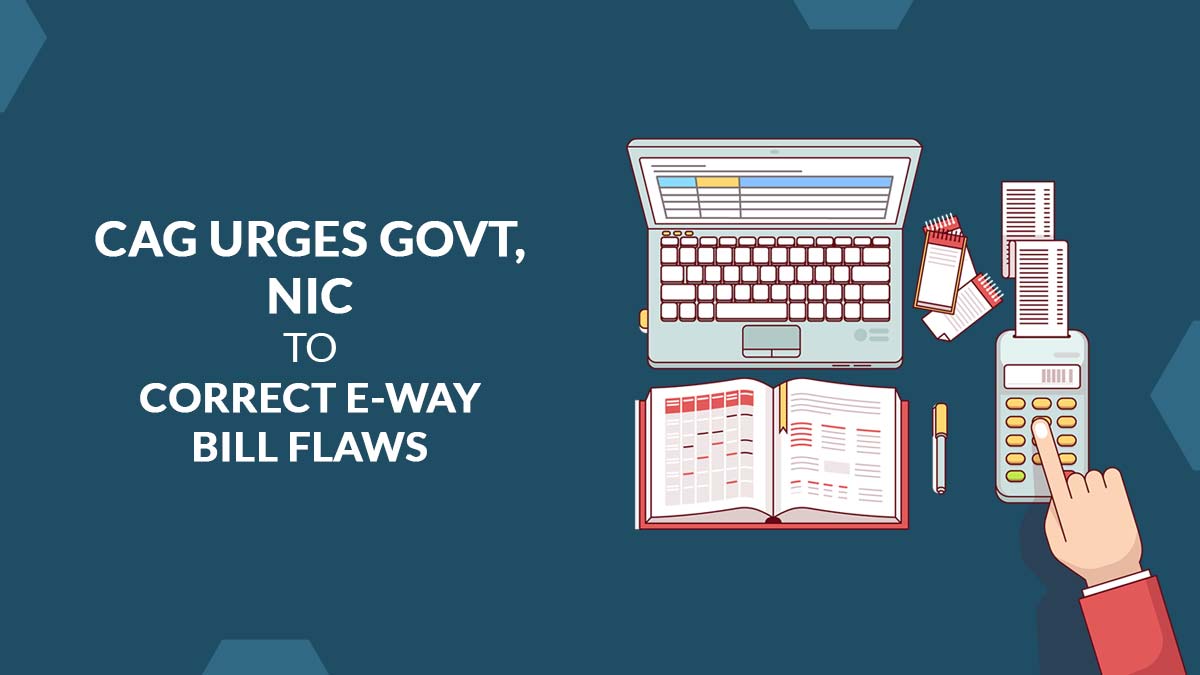
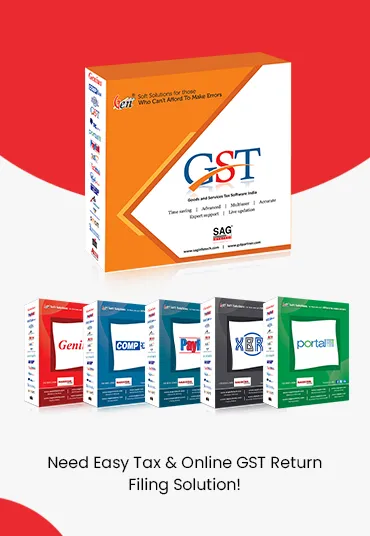
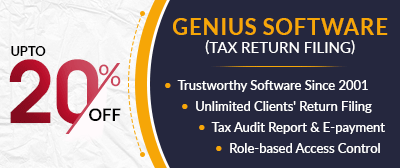
I am right now working in a company with 4.4 years of experience. Right the amount share in my account is as follows: i) Employee share: 66,612 ii) Employer Share: 21,459 iii) Pension Contribution: 43,502
So I am planning to withdraw the above amount after 5 years. So will it be taxable? What are all the components that I can withdraw (only Employee & Employer share or all including Pension fund)? If I plan to switch a company in between do I need to transfer the amount or do I need to open a new account for withdrawal? If I do it will that be taxable? Confused with all these questions please do clarify the same
If you withdraw after completion of 5 years, then no amount will be taxable and if you switch your job then you not need to open a new pf account, you can continue with the same account and can withdraw after completion of 5 years (in total). But if you withdraw the amount and open a new a/c, the withdrawal will be taxable.
With reference to your statement that I can continue with the same account and can withdraw after completion of 5 years (in total), will it be possible to withdraw all the amount from my current pf account while I am working for a company in present? Do I need to provide a valid reason for doing so or else I can withdraw my amount just like that as I have completed 5 years of service including my previous company experience?
You can withdraw pf amount while on the job only for the defined reasons as are stated by EPFO and also the eligible amount and requirement of minimum service period are provided by EPFO, so you have to look after for these before withdrawal.
Dear Sir,
I have completed my 3.5 years service, so now want to withdraw the pf amount without any deductions, request you to suggest, what should I do.
IF pf amount is withdrawn before 5 years, TDS @ 10% will be deducted.
Hi,
I have worked for 3.9 years in 1 organization, Is 10% TDS applicable in cessation (SHORT SERVICE) case? if yes, then how can I remove this deduction. Can I apply form 15/H online?
PF withdrawal before 5 years will attract TDS @ 10% and form 15H is for no TDS deduction on interest paid by the bank, so this form is not applied in your case.
Sir,
As I have resigned 3 months ago and I have 9.7 Years of Aggregate service. 10% TDS is applied to my online claim of Rs. 70000. Please explain why and what can I do now?
As per rules, TDS would not be deducted but as TDS has been deducted, you can claim the refund for the same by filing ITR for the concerned period.
I have completed 1.6 years of service in the same company and my current PF balance lying as Rs. 39,000 including all employee, employer and pension contributions. So now I want to withdraw the money. So is there any TDS or tax deductible for this amount???. So please advice.
As you are withdrawing amount before 5year and as your withdrawal amount is more than Rs.50000, so TDS @ 10% will be applicable.